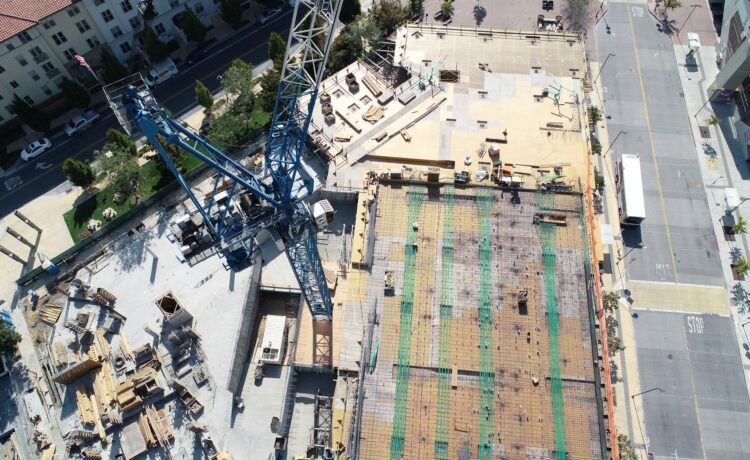Construction is usually linked with construction of tall buildings and spacious houses. However, as with most beautiful buildings, there is always the mastermind in architects—the people who bring art intermingled into science to create the existing world. Yes, architects are so much more than just designers, as they combine visions, create practical spaces at the same time thinking about aesthetics, safety, and sustainability.
An architect proves to be a necessity in a world that keeps on demanding changes and new sophisticated designs and uses. No matter whether it is on designing a comfortable dwelling or a large business establishment, their control spans the entire chain of construction process: planning, building and designing. It is now high time that we further analyse why architects form an integral part of the construction industry and how through their endeavours the path for successful projects such as from Grimmond is opened.
The Education and Training of Architects
Planning to become an architect means willingness, hard work, and huge interest in designing. This typically starts with getting a bachelor’s degree in architecture; this introduces the basics of design along with facts about construction.
Further, in order to enhance one’s skills in the field, an architect is likely to obtain a master’s degree subsequently. This advanced education also rests on areas such as sustainable design and urban planning.
Training is therefore incomplete without internships . They provide a practical working environment under more experienced and qualified personnel. Here future architects use their knowledge in practice when studying project management and relations with clients.
Licensing yet another crucial activity in growing the business and expansion of the company into new markets is licensing. To provide services legally, candidates cannot practise without passing strict examinations after the completion of courses. Education is also important for them as they experience changes that occur along their architectural career.
This is a combination of both academic education and practical experience together with resultant professional development in making competent architects ready toHandle complex projects sufficiently.
The Importance of Architects in the Pre-Construction Phase
During the pre-construction phase most factors come into play and architects have significant influence. Out of them, some turn ideas into workable technical and management plans to steer the whole process.
It implies the outlook of the designs and defines how they should be designed, and where, as well as how they should look. Designers look at the requirements of their clients and how these can be met using the characteristics of the site environment.
Furthermore, they create awareness of zoning legal requirements at an early stage in order to be complied with. It can help with outcompeting in the future as well as save time when projects are realigned in the process.
They also incorporate elements of sustainability into their acts of architecture. They do this by focusing on energy efficiency as well as the use of environmentally friendly products right from their construction phase.
Increased communication is crucial during this phase of the organisational development process. In concept development, architects consult their clients and stakeholders frequently to ensure that each adjusts ideas until all parties have the same ideas regarding the concepts.
They provide best practices for any systems projects, illustrated and explained with considerations and histories of risks. Consulting an architect also makes the projects easy to implement once construction starts to avoid a number of hitches arising in the pipeline.
Collaborating with Other Professionals
Teamwork is the key in construction functions, both major and minor. An architect always collaborates with an engineer, contractor, and other personalities to develop a structure. And this makes my teamwork to ensure that every aspect of a project is well coordinated.
The architecture profession leans on the structural engineers for technical solutions. Their participation enables designers to develop aesthetic layouts that are also safe for use and practical. When these two responsibilities work hand in hand it is easier to avoid massive changes in the future.
Contractors also have another significant role to perform during this collaboration phase. They give practical information about what materials the product is made of and how it is made, thus giving a realism to the design ideas.
The process necessitates the need for good communication. Meetings become useful in ensuring that all people involved in a project are on the same time, cost, and scope understandings. As architects actively participate in professional networks, they open a space where one great idea does not impede another nor does it slow one more down.
Ensuring Quality and Safety in Building Design
Architects have an extremely important responsibility to oversee quality and safety at every stage in the design and construction process. It starts with the concept of a house down to the actual designing of new construction brands that are not only artistic but also pre-arranged for building purposes. Plans that architects take in executing their projects include aspects like legal requirements of construction, hazards to environment, and materials.
While constructing they have to visit the site and compare it to the plan they have physio architecturally. This enables quick rectifications in case of emerging problems or where other hitches occur while working on the plan. They have tight cooperation with contractors and engineers to guarantee that various aspects of the project meet safety requirements.
In addition, sustainable measures are promoted by architects with the use of instalments of energy saving systems in the buildings they design. Besides encouraging the sustainable use of the environment, it also contributes to increased duration for construction projects.
By professional dedication, following architectural safety standards and striving for the best result, architects help build safer communities. It defines our settings and puts the human experience first at the same time—you can see how valuable these individuals, such as Grimmond, are to architectural design at the moment.
The Role of Architects During the Construction Process
Designers as well as coordinators Architects play an important role of intermediaries between the conceptual and the construction phase of the project. They guarantee that the vision provided on architectural drawings is translated into physical realisations effectively.
Consequently, site visits with which the accomplishment is controlled are obligatory. Engineers, for instance, determine a degree of conformance of the construction to their specifications and specifications. In case of any disparities, they avail rudimentary solutions to ensure that all move through the expected channel.
During this phase it is important that there is regular communication in between. This is because architects engage contractors and builders on the same project hence enabling them to solve every issue as it occurs. It means the specialists are able to make changes while the general design concept is not affected.
Furthermore, architects also protect appearances, while achieving functionality in structures that are being built. These two focuses have made the creation of spaces, which adorn aesthetic value while, at the same time, serving the user’s needs.
Architects monitor the construction process, and other stakeholders navigated by them accomplish the most extraordinary architectural visions in a constantly evolving context.
Designers as well as coordinators Architects play an important role of intermediaries between the conceptual and the construction phase of the project. They guarantee that the vision provided on architectural drawings is translated into physical realisations effectively.
Consequently, site visits with which the accomplishment is controlled are obligatory. Engineers, for instance, determine a degree of conformance of the construction to their specifications and specifications. In case of any disparities, they avail rudimentary solutions to ensure that all move through the expected channel.
During this phase it is important that there is regular communication in between. This is because architects engage contractors and builders on the same project hence enabling them to solve every issue as it occurs. It means the specialists are able to make changes while the general design concept is not affected.
Furthermore, architects also protect appearances, while achieving functionality in structures that are being built. These two focuses have made the creation of spaces, which adorn aesthetic value while, at the same time, serving the user’s needs.
Architects monitor the construction process, and other stakeholders navigated by them accomplish the most extraordinary architectural visions in a constantly evolving context.





